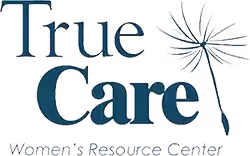Sixteen-year-old Alyssa had enough of the fighting and physical abuse at home. Yelling often turned into punches. One day, she skipped school, packed a bag, and got into her car. James, the man she’d met online a month ago, promised to take care of her. He had been sending her encouraging notes for the past two weeks, saying that whenever she was ready, he’d be there for her. Last night they had agreed to meet at the rest stop near Wheatland. He lived in Denver and he promised to help her get a job and let her stay with him until she was on her feet. A new life! Alyssa grew more excited as she drove the interstate toward Wheatland. Upon reaching the rest stop, she parked her car and looked around for James, a photo of him on her phone. He greeted her with a hug and a kiss on the cheek. As he removed her suitcase from the backseat of her car, Alyssa climbed into the front seat of his. Leaving her vehicle at the rest area would insure no one would find her. Running off with James spoke of adventure and excitement. Alyssa couldn’t wait to start her new life with this older man in the big city.
The Epidemic of Human Trafficking
Alyssa’s story is not unique. Every year in the United States more than 1.5 million children and youth run away from home. Many of them become hunted by predators, not of the animal variety, but instead by humans, men and women, who target them for wicked purposes.
Human trafficking is an epidemic around the world, including within the United States. Wyoming and the surrounding areas are not immune. In Colorado, for example, the number of human trafficking cases reported jumped from 82 in 2015 to 178 in 2018. During the first half of 2019, 102 cases had already been reported. These are just the ones known about.
Runaways are among those stalked and courted by traffickers. However, adults can fall prey to traffickers as well. The promise of a better life, more money, and someone who cares are often the carrots used to lure someone into sex or labor trafficking. Massage parlors, strip clubs, and hotel services are among the places that traffickers send their victims. Labor trafficking sites are also prevalent, especially in agriculture; other employment, including nannies and hotel service workers, are also exploited in labor trafficking.
Even with its low population, Wyoming also has cases of human trafficking. In 2014 and 2015, the number of reported cases was quite low: 3 and 6, respectively. However, that number increased significantly in the following two years, to 13 in 2016 and 2017. Our interstate systems provide opportunity to pick up and transport unsuspecting persons, including minors, from place to place, whether in-state or out-of-state.
Women and girls used in sex trafficking are often forced to engage in unprotected sex, leading to pregnancy and abortion. Trafficking survivors speak of multiple pregnancies and abortions. Traffickers pay for abortions for their own financial gain, putting their victims back to ”work” as soon as possible. Even girls as young as 13 endure such trauma.
Awareness and Vigilance
January is National Slavery and Human Trafficking Prevention Month and Human Trafficking Awareness Month. When we stop at rest areas, we should all be more alert of potential abductions, including our own, and whenever we are in hotels or other places, simple awareness can save lives. We should also be conscious – and suspicious – of people actively pursuing us on the internet.
Women and girls are more likely to be trafficked, especially for sex; however, men and boys are also used for such purposes. Be vigilant to protect yourself and to help someone else.
If you suspect human trafficking, or you have been trafficked, contact the national hotline for help: 888-373-7888 or text “Be Free” to 233733.
True Care is available for anyone experiencing an unplanned pregnancy, including women who are trafficked and those experiencing sexual assault. Contact our Scheduling Line for your free appointment: 307-215-9684.
